BUS101 Business Law Case Study: Analyzing the Verryt v Schoupp Case
VerifiedAdded on 2023/06/11
|5
|643
|300
Case Study
AI Summary
This business law case study analyzes the Verryt v Schoupp case, focusing on negligence and the apportionment of responsibilities. The first judge determined the defendant was fully responsible for the plaintiff's injuries, citing damages, proximate cause, cause in fact, responsibility, and obligation/duty. The Court of Appeal, however, considered the boy's understanding of the risk involved in 'skitching' and apportioned some blame to him, finding that the boy should bear some responsibility for his injuries. The analysis delves into the facts presented to the first judge, the reasoning of the Court of Appeal for modifying the initial judgment, and the statutory rules of the road. The study concludes that the final apportionment of responsibility, assigning ten percent of the blame to the boy, was justifiable, considering his awareness of the inherent risks.
1 out of 5
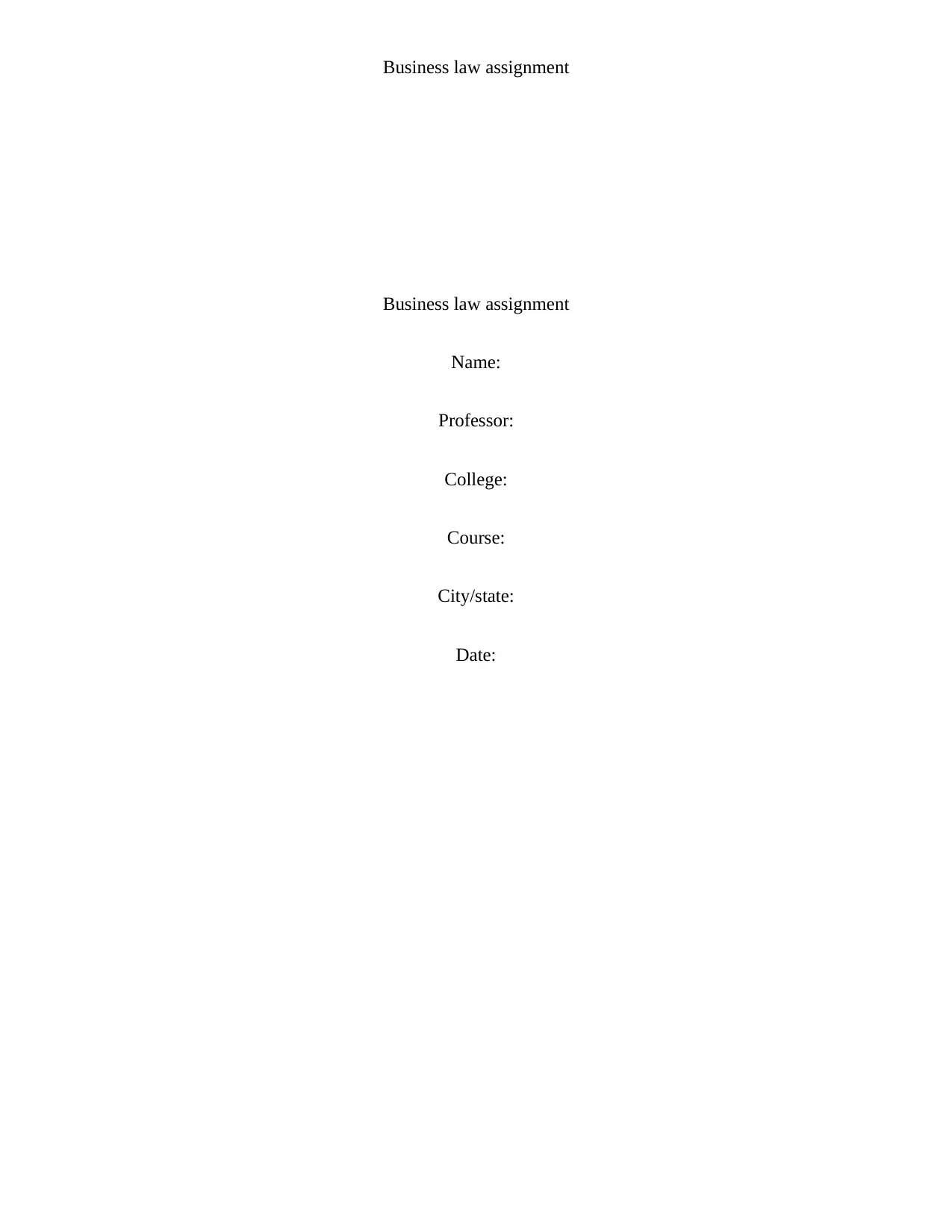
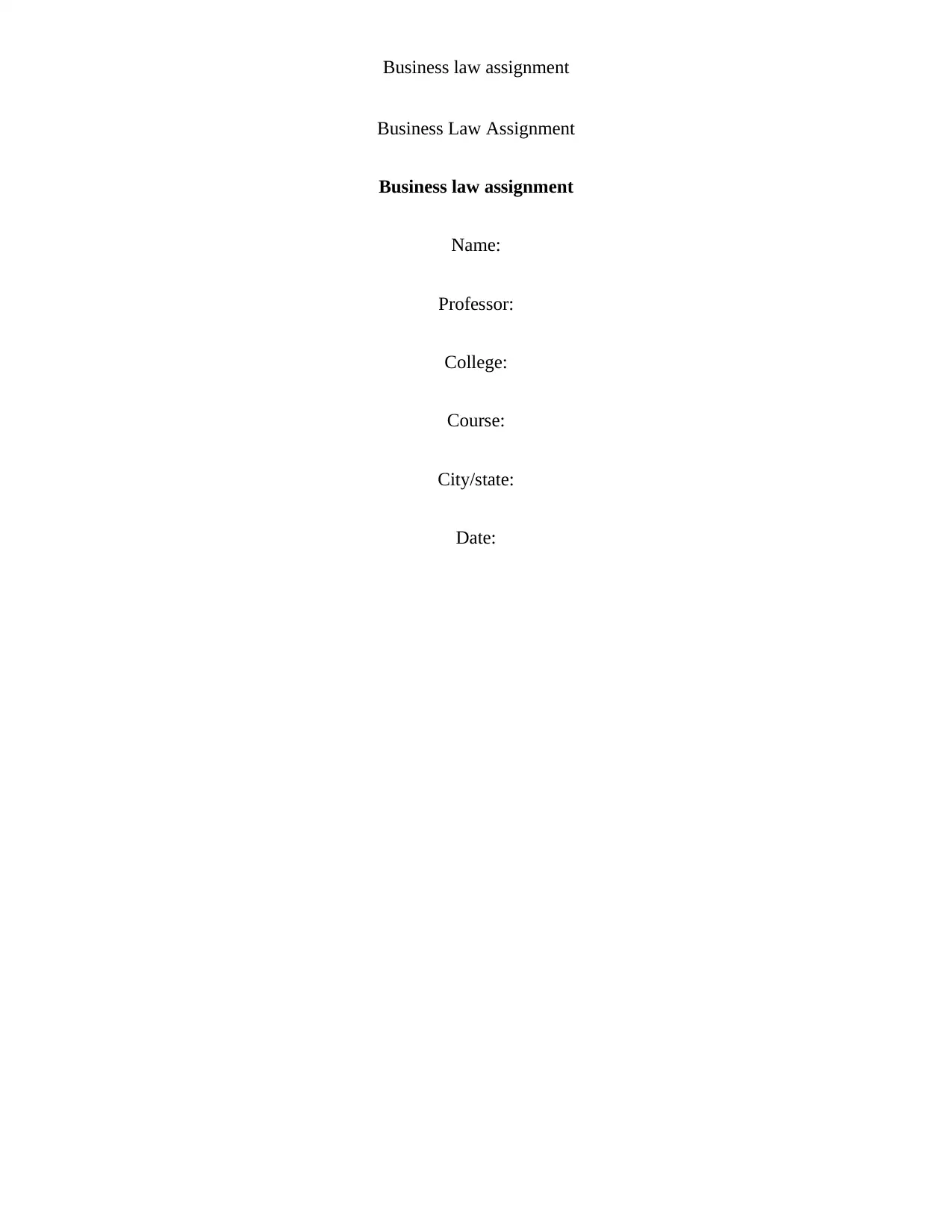
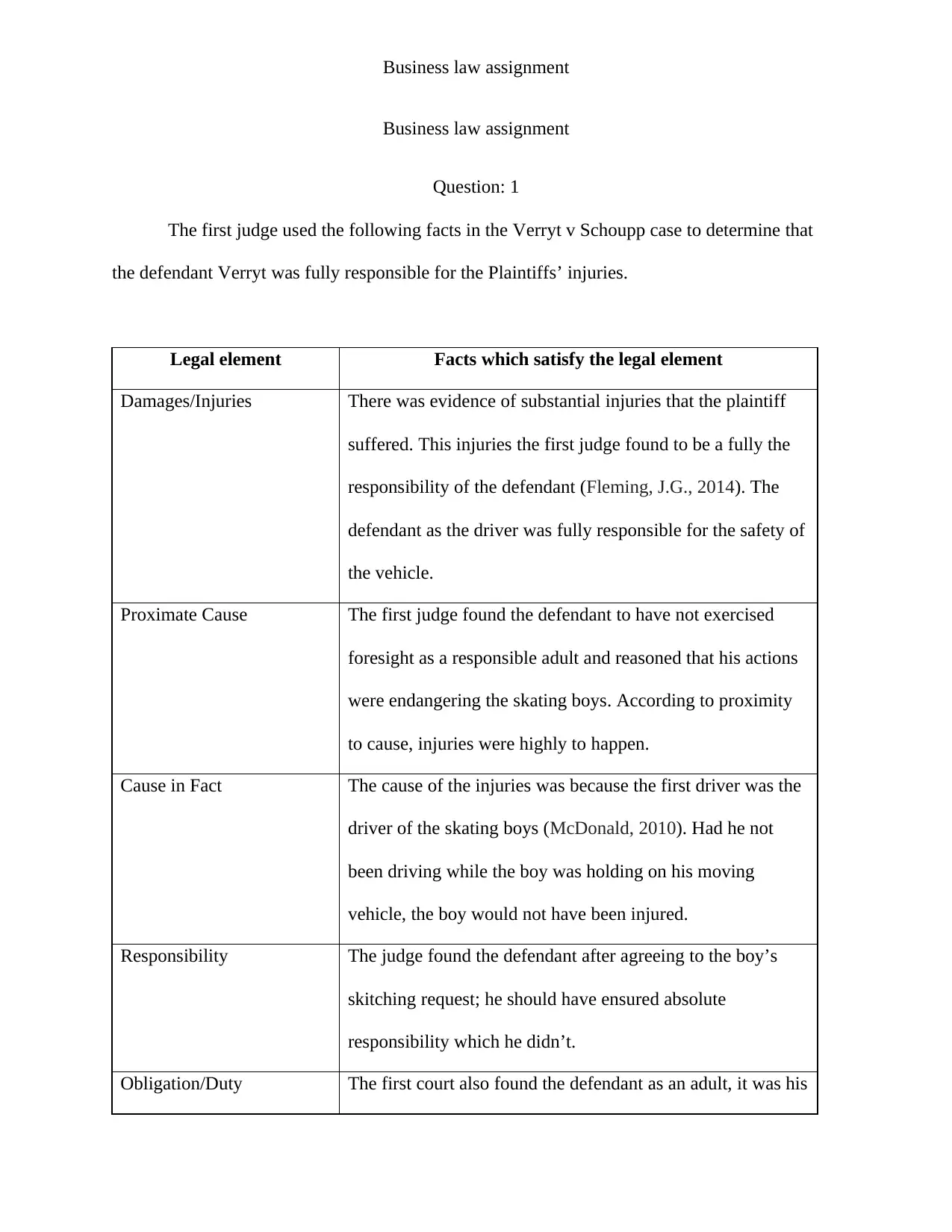

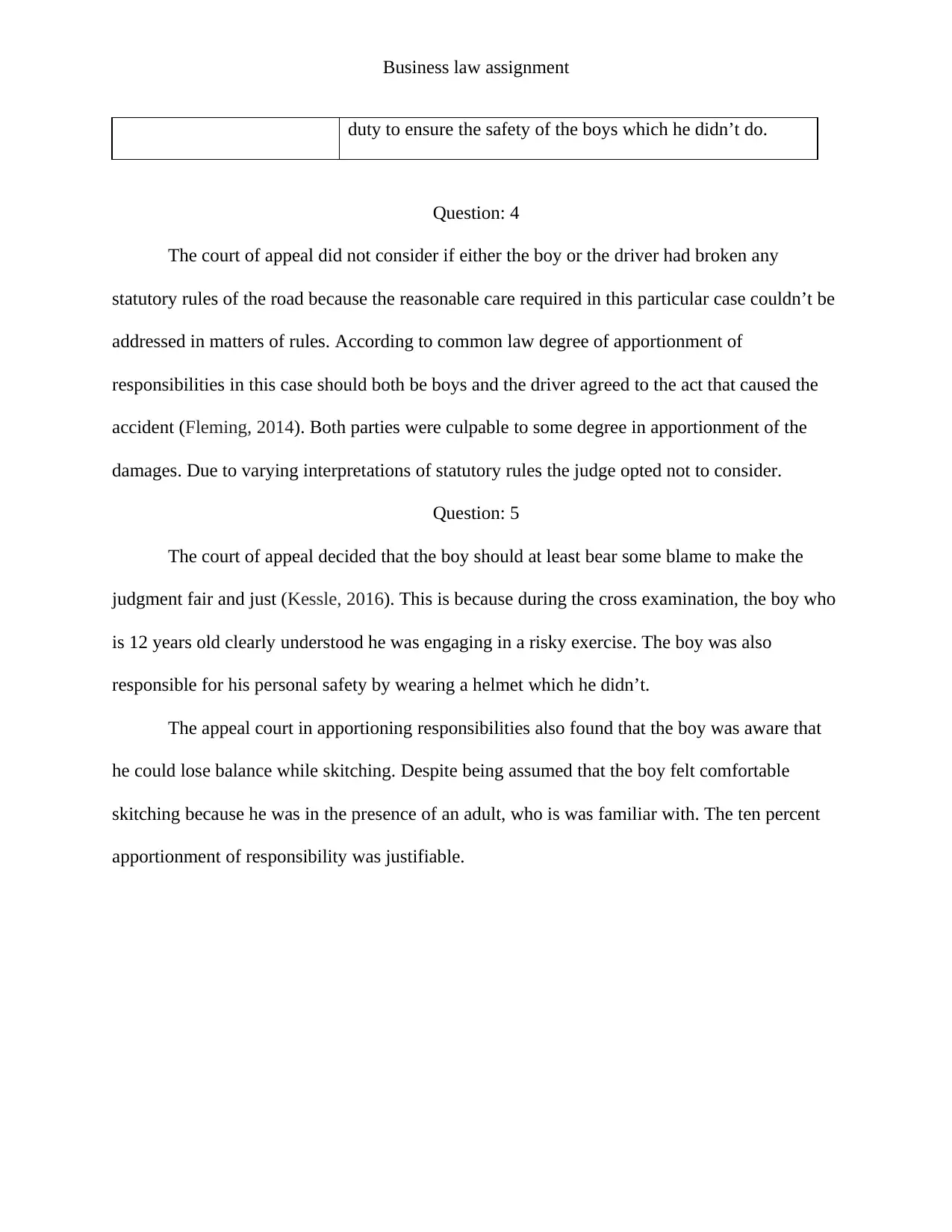
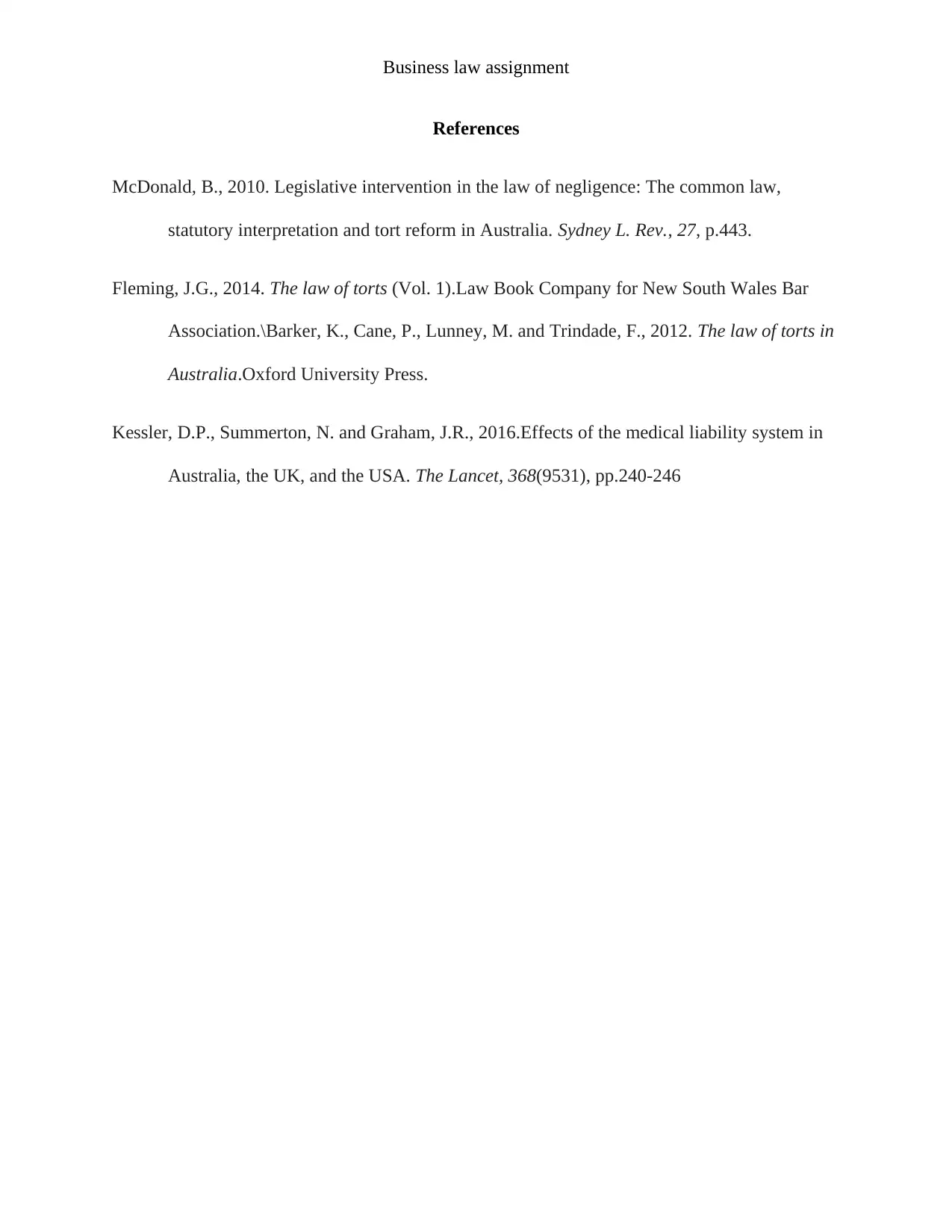





![[object Object]](/_next/static/media/star-bottom.7253800d.svg)